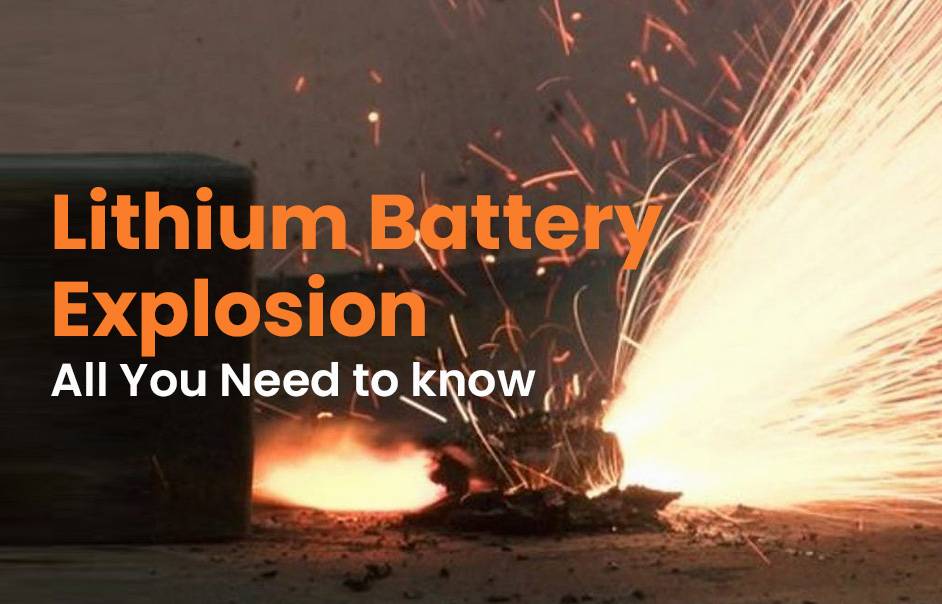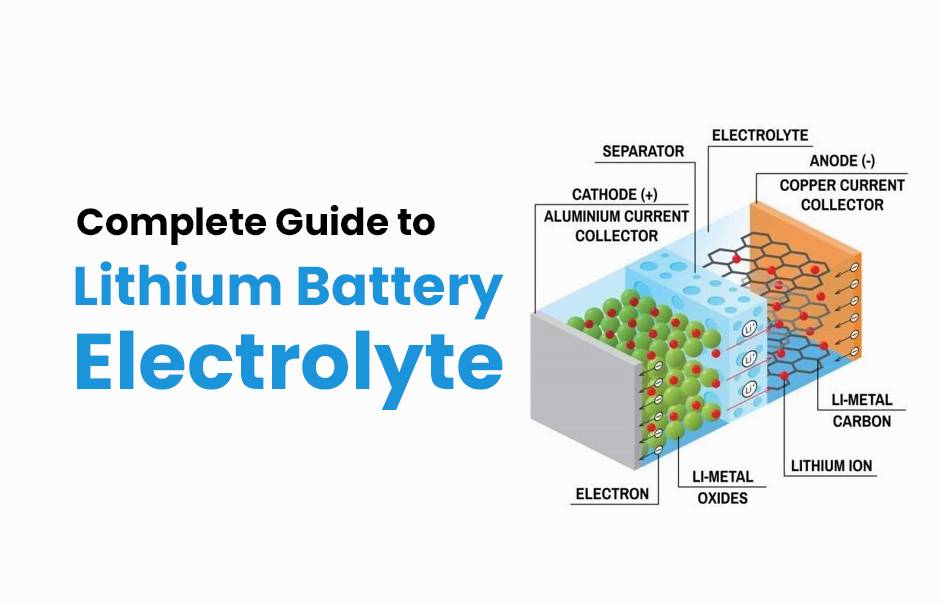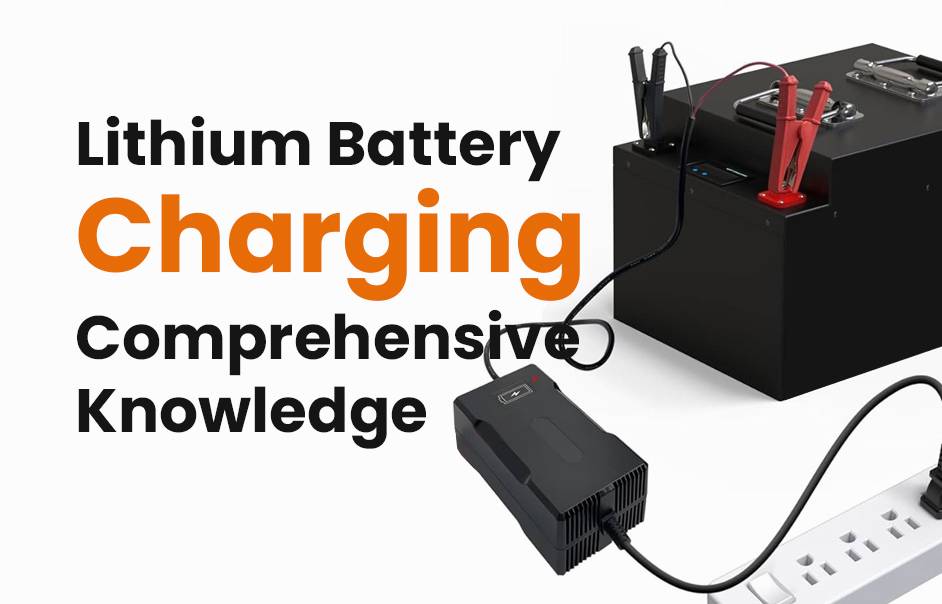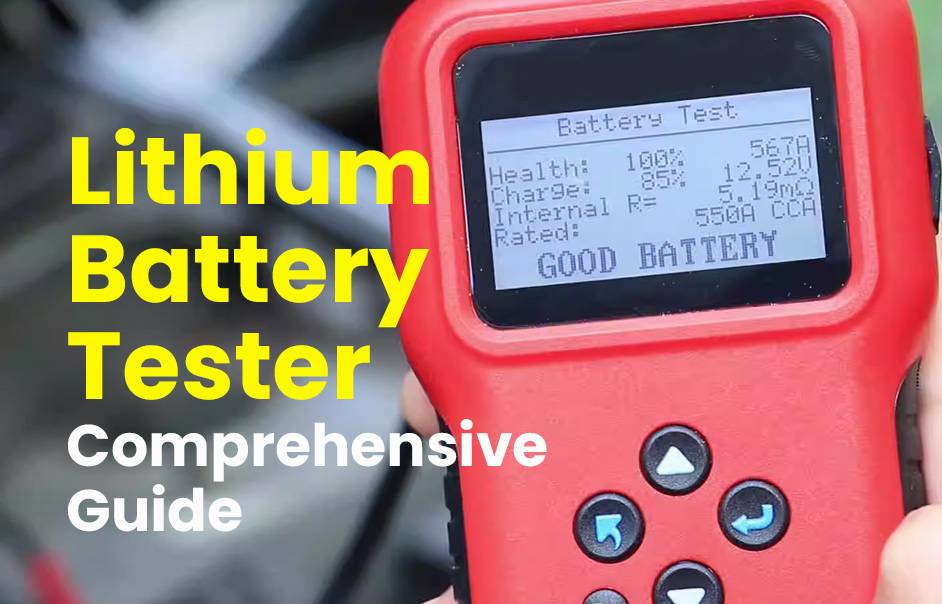In our blog post, we explore the world of lithium battery explosions, shedding light on the risks associated with these essential power sources in our daily devices. From smartphones to electric vehicles, lithium batteries have transformed technology. We unravel the mechanics, causes of explosions, and crucial prevention measures. Join us in this exploration to understand and ensure the safe use of these powerful energy providers. Grab your favorite device (safely!) as we dive into the details.
What are Lithium Batteries?
Lithium-ion batteries, often referred to as lithium batteries, are a type of rechargeable battery that utilizes the reversible intercalation of lithium ions into electronically conducting solids to store and release energy. These batteries are widely used in various electronic devices, such as mobile phones and electric vehicles.
A lithium-ion battery typically consists of single or multiple lithium-ion cells, each containing a protective circuit board. Once these cells are installed inside a device along with the protective circuit board, they collectively form what is commonly known as a lithium-ion battery.
Compared to other types of rechargeable batteries, lithium-ion batteries offer several advantages. They are known for having higher specific energy, higher energy density, greater energy efficiency, a longer cycle life (the number of charge-discharge cycles a battery can undergo), and a longer calendar life (the overall lifespan of the battery regardless of usage cycles). These characteristics make lithium-ion batteries a popular choice for powering a wide range of electronic devices in our daily lives.
Lithium batteries offer efficient, lightweight power for diverse applications. Balancing their advantages with safety awareness ensures responsible and secure use in our everyday devices.
How do Lithium Batteries Work?
Lithium batteries are popular for their high energy density and durability. Ever wondered how these powerhouses work?
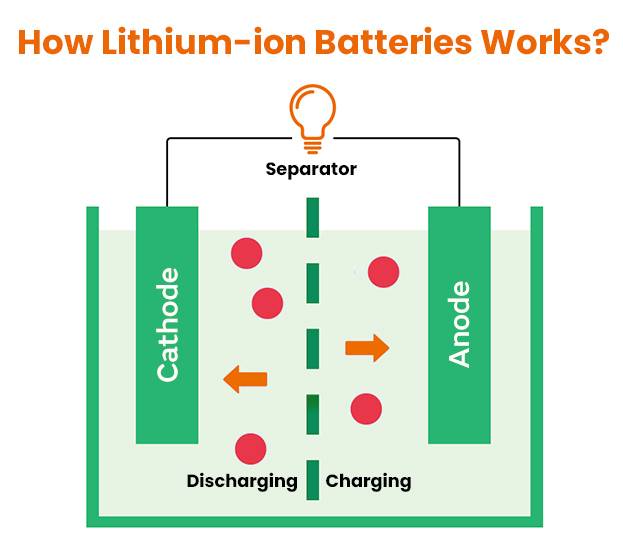
- Core Components: At the heart of a lithium battery is an electrolyte, enabling ion movement between positive (cathode) and negative (anode) electrodes.
- Electrode Materials: The cathode, typically lithium cobalt oxide, and the anode, made of graphite, play crucial roles in the battery’s operation.
- Charging Process: During charging, ions move from cathode to anode through the electrolyte, creating a buildup of electrons at the anode and storing electrical potential energy.
- Device Usage: When using a device with a lithium battery, like a smartphone, the process reverses (discharging). Stored energy converts back into current as ions travel from anode to cathode.
- Versatile Applications: Lithium batteries’ efficiency makes them ideal for various applications, from portable electronics to electric vehicles.
- Future Developments: Advancements in technology promise even more impressive developments in the field of lithium batteries.
In summary, lithium batteries’ efficiency and versatility, with key components like electrolytes and specific electrode materials, make them a go-to choice for a range of applications. Ongoing technological progress ensures continuous improvements in this field.
Common Causes of Lithium Battery Explosion
Understanding the common causes of lithium battery explosions is crucial for preventing accidents and ensuring safety. Here’s a breakdown:
- Physical Damage: Dropping or crushing batteries can lead to internal short circuits, generating heat and potentially causing explosions. Handle lithium batteries with care to avoid compromising their integrity.
- Thermal Runaway: Overheating, often due to exposure to direct sunlight or extreme temperatures, can trigger a chain reaction within battery cells, leading to rapid gas production and explosions.
- Manufacturing Defects: Poor quality control during production can result in faulty batteries prone to malfunctioning or short-circuiting. Strict adherence to quality standards and thorough testing is essential for manufacturers.
- Improper Charging: Overcharging or using incompatible chargers increases the risk of overheating and explosions. Follow manufacturer guidelines for charging methods and use certified chargers to minimize these dangers.
- Age-related Degradation: Over time, lithium batteries may undergo unstable chemical reactions, leading to failure and an increased risk of explosion. Awareness of these common causes empowers consumers, manufacturers, and users to handle lithium batteries responsibly while maximizing their benefits.
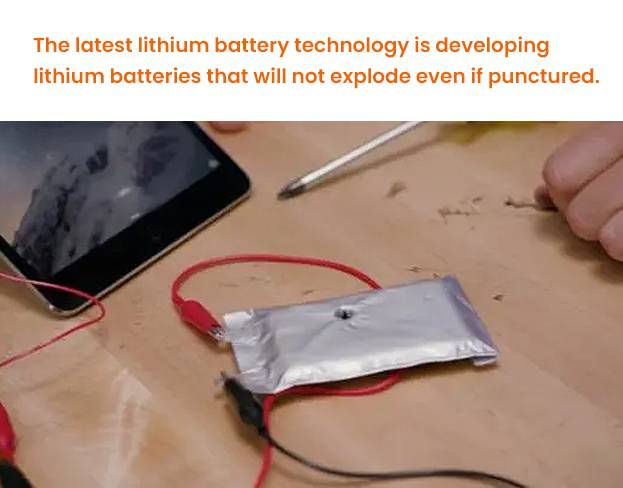
Dangers and Risks Associated with Lithium Battery Explosions
Lithium battery explosions pose severe dangers and risks, including:
- Fire Hazards: Explosions release intense heat and energy, potentially igniting flammable materials and causing structural fires.
- Toxic Gas Emissions: Explosions release harmful fumes, posing respiratory risks and poisoning, especially in enclosed spaces like homes or vehicles.
- Physical Injuries: The force of explosions can lead to burns, cuts from flying debris, and direct harm to individuals, putting nearby people at risk.
- Economic Implications: Lithium battery explosions result in financial losses, including damaged property, equipment replacement costs, and medical expenses.
To mitigate these risks:
- Proper Handling: Avoid mishandling and exposure to extreme temperatures.
- Regular Inspections: Conduct inspections to identify signs of damage or deterioration.
- Education: Provide awareness and education on safe handling practices, storage, and recognizing warning signs.
Understanding these dangers is crucial for safer lithium battery usage, ensuring the responsible handling of these powerful energy sources without compromising well-being.
Steps to Prevent Lithium Battery Explosions
To prevent lithium battery explosions and ensure safety, follow these essential steps:
- Purchase from Reputable Manufacturers: Buy high-quality lithium batteries from trusted sources (like Redway Power) to avoid cheap knock-offs or counterfeit products that may not adhere to safety standards.
- Proper Handling and Storage: Follow manufacturer’s instructions for temperature limits, charging procedures, and usage recommendations. Avoid exposing batteries to extreme heat or direct sunlight.
- Use Correct Chargers: Use chargers specifically designed for lithium batteries to prevent overcharging or overheating. Regularly inspect chargers for damage and replace if necessary.
- Secure Packaging for Transport: When transporting, securely package batteries in non-conductive materials with adequate padding to prevent contact with metal objects that could cause a short circuit.
- Handle Damaged Batteries with Caution: If batteries show signs of damage, such as bulging or leaking fluids, stop using them immediately and dispose of them according to local regulations.
By adhering to these preventive measures and staying informed about safe lithium battery handling practices, you can significantly minimize the risk of battery explosions while ensuring optimal performance.
What to Do in Case of a Lithium Battery Explosion
In the unfortunate event of a lithium battery explosion, taking immediate action is crucial for minimizing damage and ensuring safety. Follow these steps:
- Evacuate the Area: Quickly move away from the explosion site to reduce exposure to harmful fumes or smoke.
- Call for Help: Dial emergency services immediately and provide details for guidance on handling the aftermath.
- Do Not Attempt to Extinguish Fires: Avoid touching or trying to put out fires resulting from the explosion, as they may involve hazardous materials.
- Seek Medical Attention: If there are injuries, seek medical assistance promptly, even for minor injuries that could have long-term consequences.
- Preserve Evidence: If possible, document the scene with photos or videos before leaving for later documentation.
Prioritize personal safety, rely on expert advice, and remember that each lithium battery explosion scenario is unique.
FAQs
What are some detailed causes of battery explosion, such as large internal polarization, reaction with electrolyte, poor sealing performance, and high external ambient temperature?
Certainly! Battery explosions can be caused by various factors such as large internal polarization, which can lead to swelling due to gas generation from reactions between the pole and the electrolyte. Poor quality and performance of the electrolyte itself can also contribute to battery explosion incidents. Insufficient liquid injection during the manufacturing process or poor sealing performance in the assembly process can result in air leaks, causing the battery to bulge. Additionally, the presence of dust or pole piece dust can create micro-short circuits, increasing the risk of explosion. Issues like thicker positive and negative electrode pieces or the shell wall as well as poor liquid injection sealing can also contribute to battery explosions. Furthermore, high external ambient temperatures can exacerbate the situation and serve as a significant factor in causing battery explosions.
Can overcharge, over-current, ultrasonic welding, spot welding, over-discharge, vibration, falls, and other factors contribute to lithium battery explosions?
Various factors such as overcharge, over-current, ultrasonic welding, spot welding, over-discharge, vibration, falls, and others can indeed contribute to lithium battery explosions. For instance, overcharge can lead to an explosion by causing the electrolyte to decompose and generating excess pressure within the battery. Similarly, over-current can result in lithium ions not being embedded properly, leading to the formation of lithium metal on the electrode’s surface, which may cause a short circuit and an explosion. Ultrasonic welding and spot welding can also trigger explosions by melting the internal diaphragm of the battery or causing severe internal short circuits. Additionally, over-discharge can lead to the dissolution of negative electrode copper, potentially causing a short circuit and an explosion. Moreover, vibration and falls can misplace internal components of the battery, resulting in direct and severe shorts that can lead to explosions. It is essential to understand and mitigate these risks to prevent lithium battery explosions.
What are some situations of explosion in the production and use of lithium batteries?
Some situations that can lead to explosions in the production and use of lithium batteries include overcharging, overcurrent, ultrasonic welding of the plastic shell, spot welding, over-discharge, and exposure to vibration and falls. Overcharging can cause violent reactions inside the battery, leading to an explosion due to increasing pressure. Overcurrent, although rare, can occur when the charging current is too large, causing a direct short circuit and explosion. During ultrasonic welding of the plastic shell, excessive ultrasonic energy can lead to the internal diaphragm melting and a direct short circuit between positive and negative electrodes. Spot welding with too much current can result in a serious internal short circuit and explosion. Over-discharge, especially in conditions of over-charging or over-discharging with high current rates, can cause the negative electrode to dissolve and deposit on the diaphragm, leading to a short circuit and explosion. Lastly, exposure to violent vibrations or falls can misplace the internal components of the battery, resulting in a severe short circuit and potential explosion. These situations highlight the importance of careful handling and monitoring of lithium batteries to prevent such incidents.
What occurs in a battery at rest after fast charging?
The study shows that rapid charging of a battery can lead to the deposition of lithium ions in the form of lithium metal on the graphite particles. This phenomenon occurs when the graphite is fully charged, causing it to expand slightly. By closely monitoring the local lithiation in the electrode, researchers can determine the current flow in the battery at the particle level. This insightful approach provides valuable insights into the behavior of a battery at rest after fast charging, revealing crucial details about lithium ion deposition and volume changes that occur within the electrode material.
How do large local currents inside batteries at rest after fast charging contribute to thermal runaway?
Large local currents inside batteries at rest after fast charging contribute to thermal runaway by influencing the internal currents at the particle level. Research has shown that these local currents can reach current densities as high as 25 milliamps per centimeter squared after just a 10-minute charging period. These internal currents represent a significant factor in the occurrence of thermal runaway, indicating that they play a crucial role in the overall process.
Why has it been unclear why some batteries go into thermal runaway even when an electric vehicle is parked?
The reason for the uncertainty surrounding why certain batteries experience thermal runaway when an electric vehicle is idle is primarily due to the lack of a dependable technique for measuring internal currents within a stationary battery. This absence of a reliable method hinders researchers and engineers from accurately pinpointing the precise causes behind these incidents of thermal runaway in parked electric vehicles.
How do scientists gain insight into why thermal runaway in batteries could cause overheating and fires?
Scientists gain insight into why thermal runaway in batteries could cause overheating and fires by leveraging a technique known as ‘operando X-ray microtomography.’ This technique allows scientists to measure changes in the state of charge at the particle level within a lithium-ion battery after it has been charged quickly. By using operando X-ray microtomography, researchers can observe and analyze the internal behavior of the battery during different charging scenarios, providing valuable data to understand the mechanisms that lead to thermal runaway. This method offers a detailed look into the processes occurring within the battery at a microscopic level, helping scientists identify potential triggers for overheating and fire risks associated with thermal runaway in lithium-ion batteries.
Can overcharge, over-current, ultrasonic welding, spot welding, over-discharge, vibration, falls, and other factors cause lithium battery explosions?
Various factors can indeed cause lithium battery explosions, including overcharge, over-current, ultrasonic welding, spot welding, over-discharge, vibration, falls, and other circumstances.
An overcharge can lead to an explosion when the charging voltage exceeds a certain threshold, causing the electrolyte within the battery to decompose and trigger violent reactions, ultimately leading to an increase in pressure and a potential explosion. Similarly, an over-current situation can result in an explosion if the charging current becomes too excessive, preventing lithium ions from being embedded properly and causing a direct short circuit.
Ultrasonic welding of plastic shells, especially if not performed correctly, can transmit excessive energy to the battery cell, leading to internal reactions and a possible explosion. Spot welding, if done with too much current, can also cause serious internal shorts that may result in an explosion.
Furthermore, over-discharging a battery can lead to explosions, particularly if certain conditions are met, such as the dissolution and deposition of copper on the diaphragm, leading to a short circuit. Vibrations and falls can also potentially cause explosions by dislodging internal components and causing severe short circuits.
It is crucial to understand that these factors can contribute to the unsafe operation of lithium batteries, potentially leading to explosions and other hazardous situations. Proper handling, monitoring, and control of these factors are essential to ensure the safe use of lithium batteries and prevent such incidents from occurring.
What are some situations of explosion in the production and use of lithium batteries?
Certainly! Lithium batteries can explode in various situations during their production and use. Some of these situations include overcharge explosions, over-current explosions, explosions during ultrasonic welding of the plastic shell, explosions during spot welding, over-discharge explosions, and explosions due to vibration or falls. These incidents can occur when factors such as excessive charging voltage, uncontrolled charging current, ultrasonic energy transfer during welding, large welding currents, over-discharging, and physical impacts like vibration or falls lead to internal short circuits within the battery, causing violent reactions, pressure build-up, and ultimately resulting in explosions. It is crucial to understand and address these potential scenarios to enhance the safety of lithium battery production and usage.
What are some factors that can lead to battery explosion?
Several factors can lead to a battery explosion. Large internal polarization within the battery can trigger a chain reaction where the pole absorbs water and reacts with the electrolyte, causing the battery to swell due to gas generation. The quality and performance of the electrolyte play a crucial role in preventing such incidents. Issues with the liquid injection process, such as injecting an incorrect amount or poor sealing performance during assembly, can also contribute to a battery explosion. Additionally, the thickness of electrode pieces can disrupt the battery assembly process and impact its overall stability. External factors like high ambient temperatures can further exacerbate the risk of explosion. Dust accumulation or debris on the pole piece may create micro-short circuits, increasing the likelihood of a battery explosion. Proper attention to these factors is essential to prevent dangerous incidents from occurring.
Can lithium batteries explode due to overcharge, overcurrent and other factors?
Yes, lithium batteries can potentially explode due to various factors such as overcharge, overcurrent, and short circuits caused by factors like ultrasonic welding and spot welding. Overcharging a lithium battery can lead to the precipitation of lithium metal on its electrodes, causing internal shorts and potentially leading to an explosion. Similarly, overcurrent situations generate excessive heat and pressure within the battery, which can also result in an explosion. Factors like ultrasonic welding, spot welding, vibration, falls, and other external stresses can potentially damage the battery’s structure, leading to internal shorts and hazardous situations that may trigger an explosion. Therefore, it is crucial to handle lithium batteries carefully and ensure that they are not subjected to conditions that may increase the risk of explosion.
What are some situations of explosion in the production and use of lithium batteries?
In the production and use of lithium batteries, explosions may occur in various situations. One common reason is overcharge explosion, which happens when the charging voltage exceeds a safe limit, leading to violent reactions and pressure build-up within the battery. Another potential cause is over-current explosion, which occurs when the charging current is too high, preventing proper embedding of lithium ions and resulting in a short circuit.

